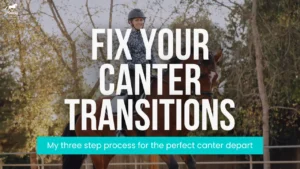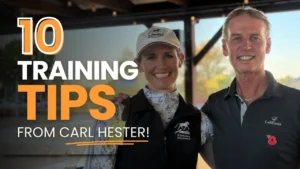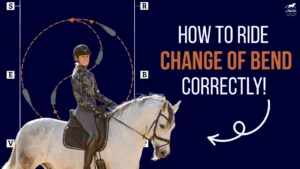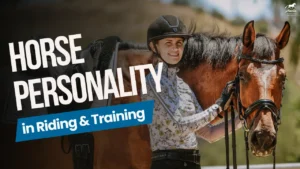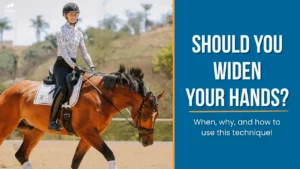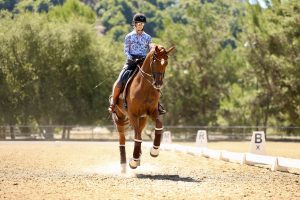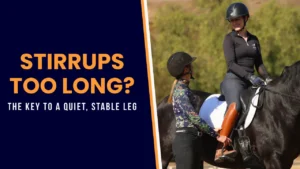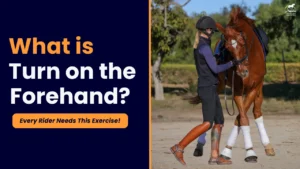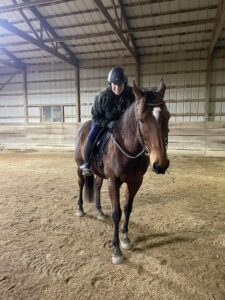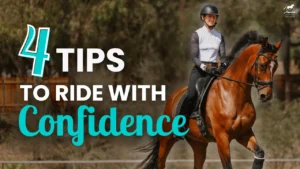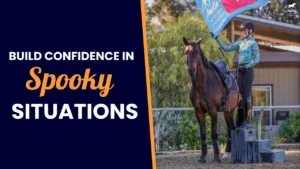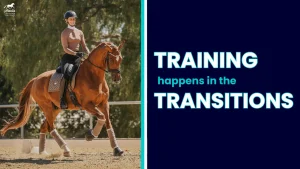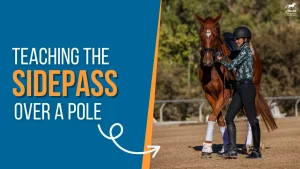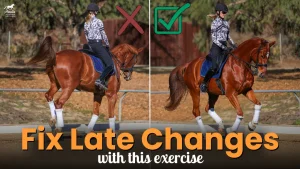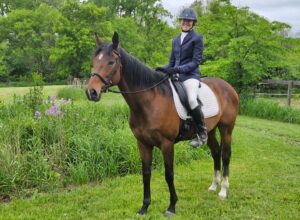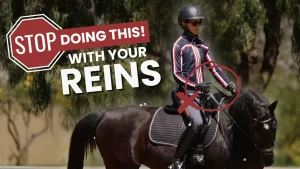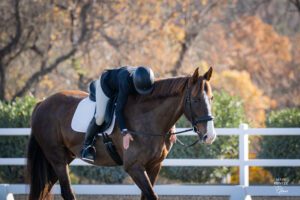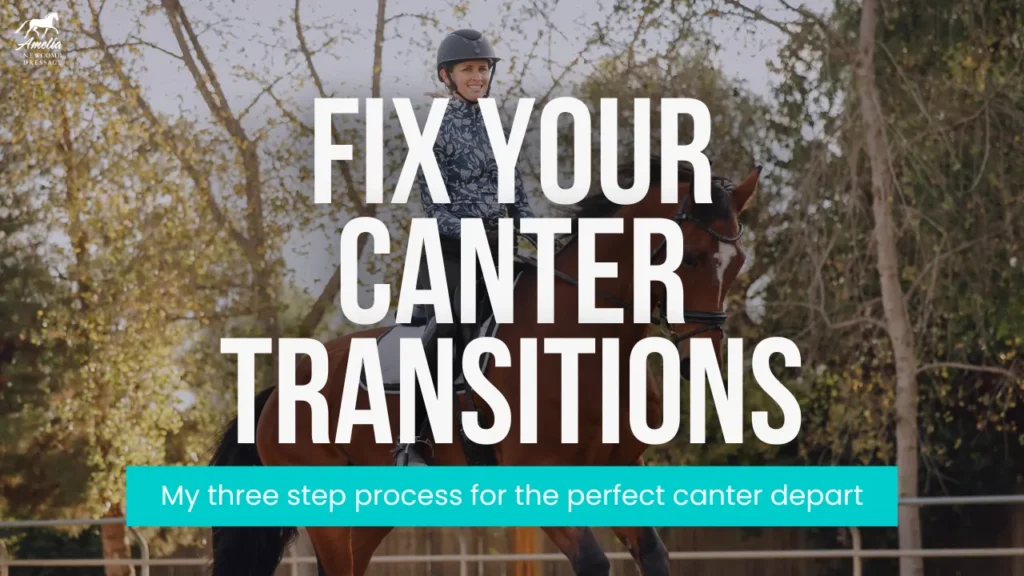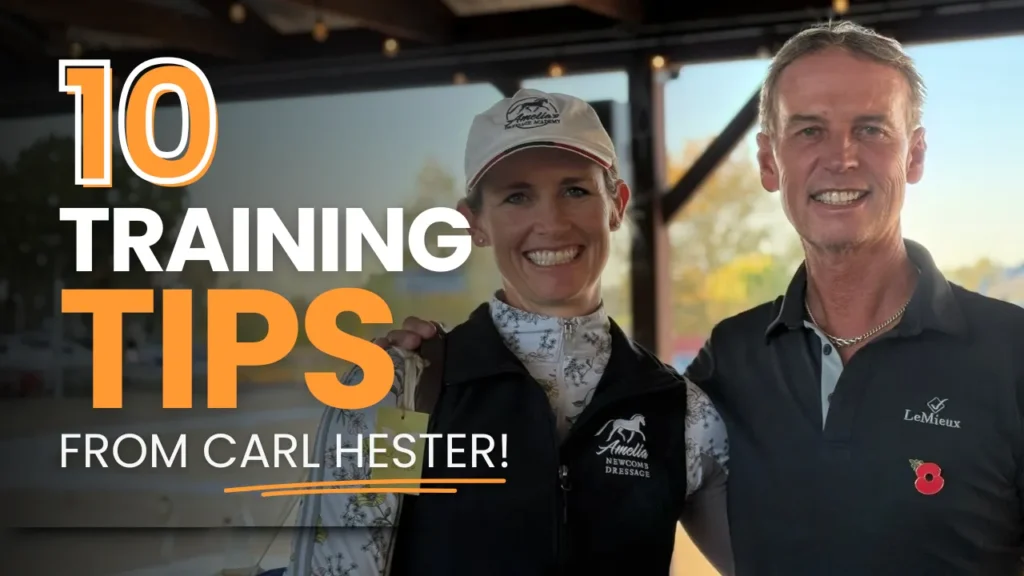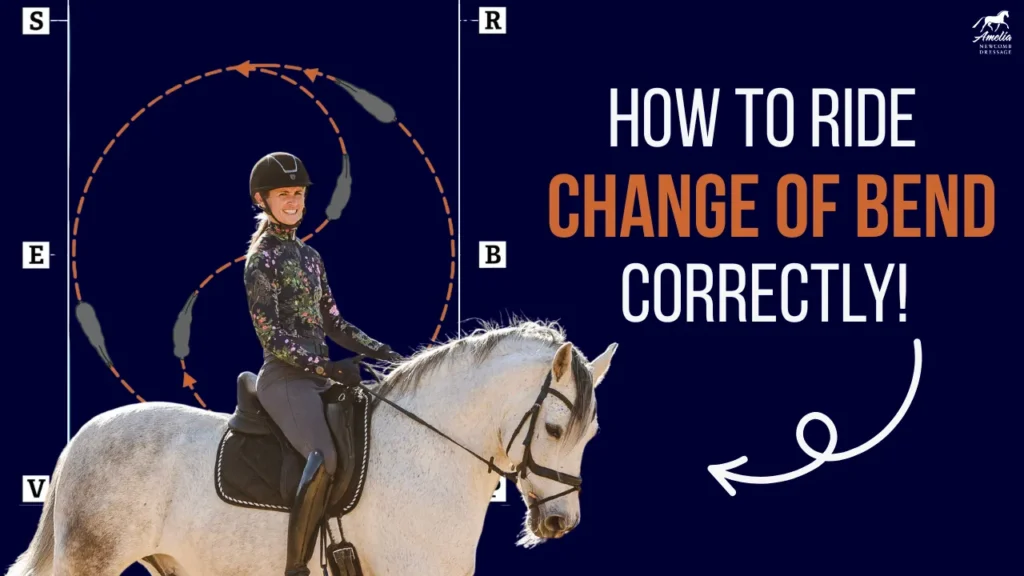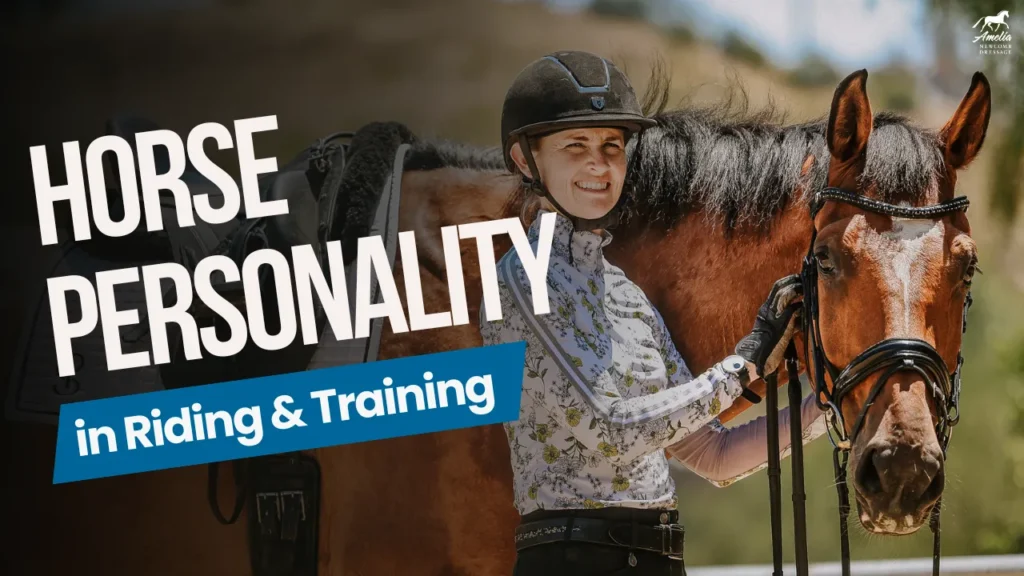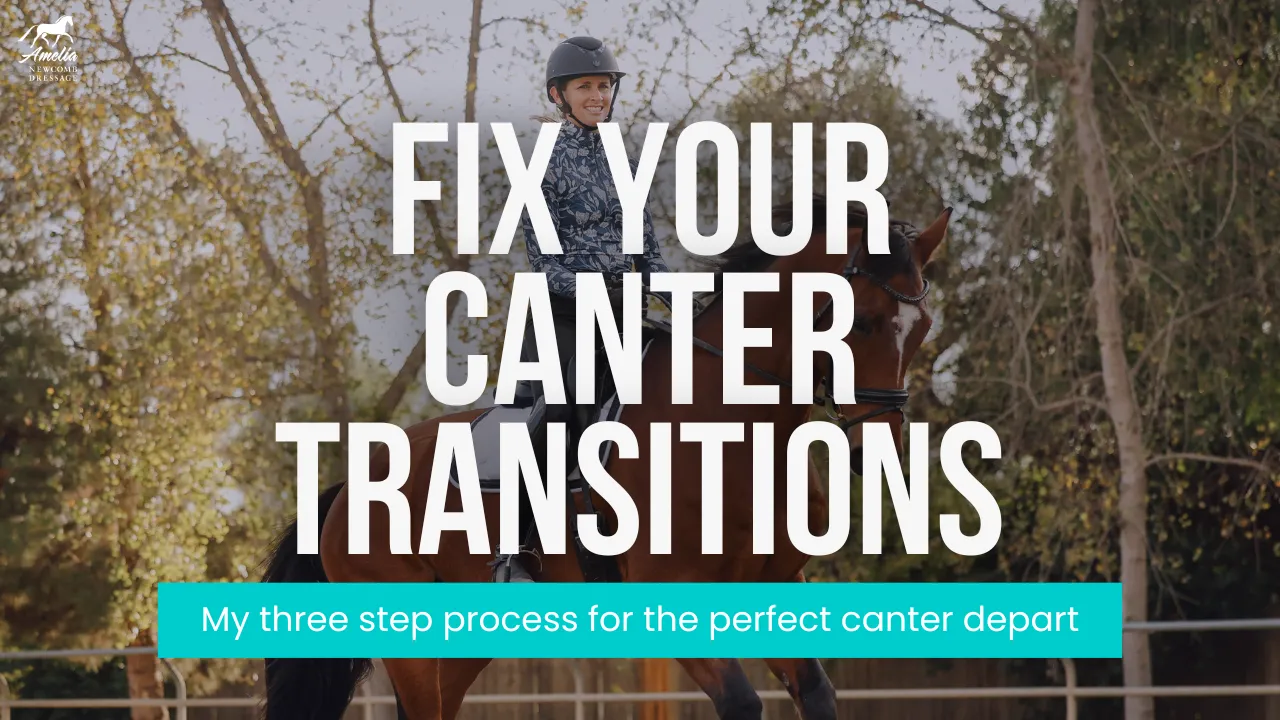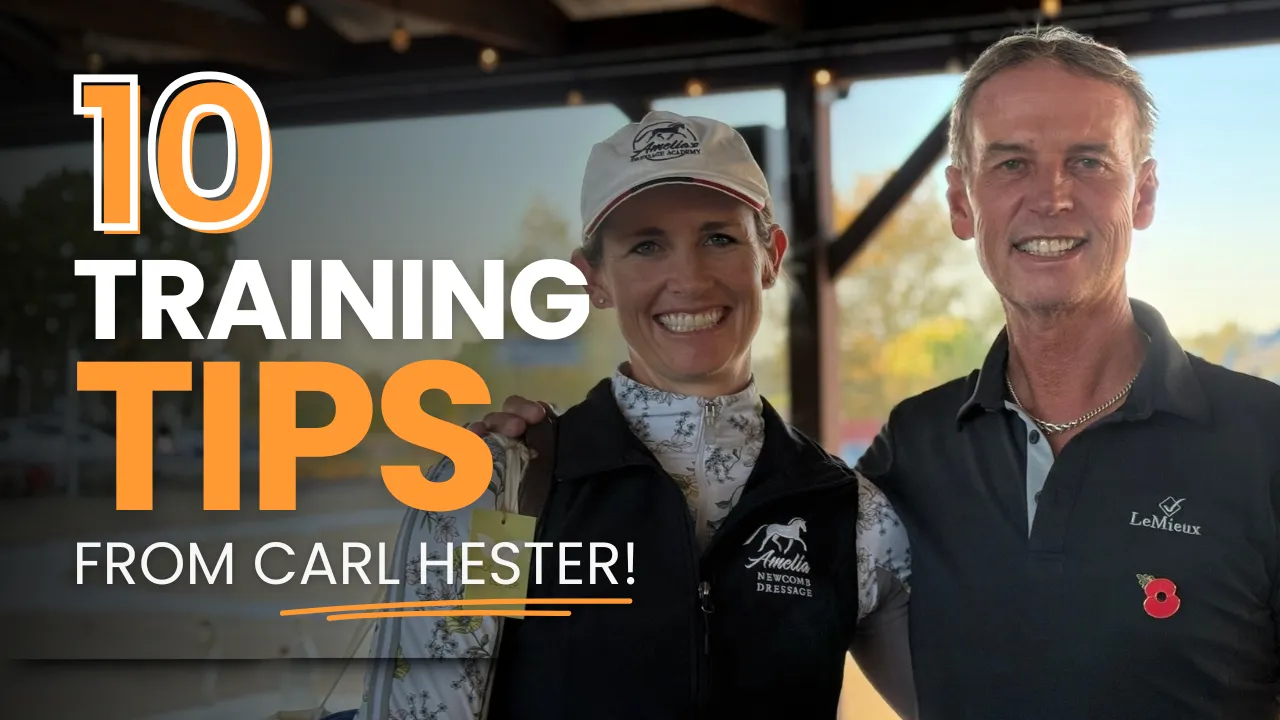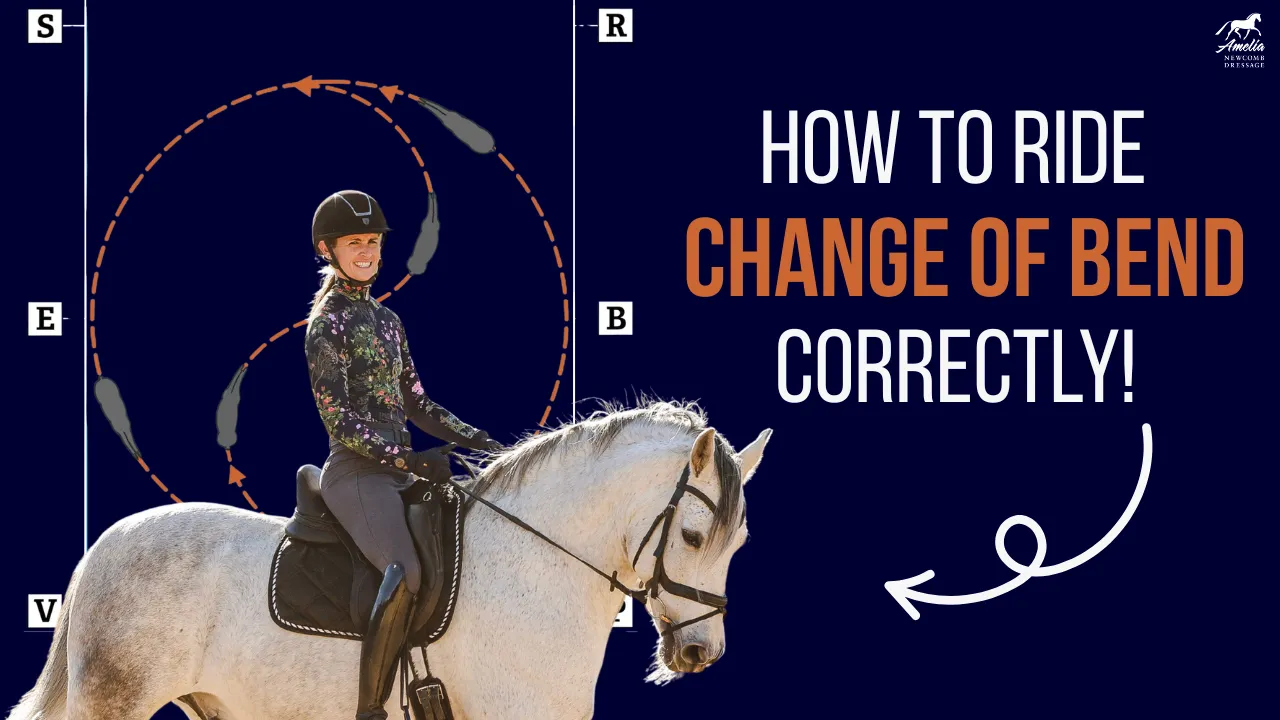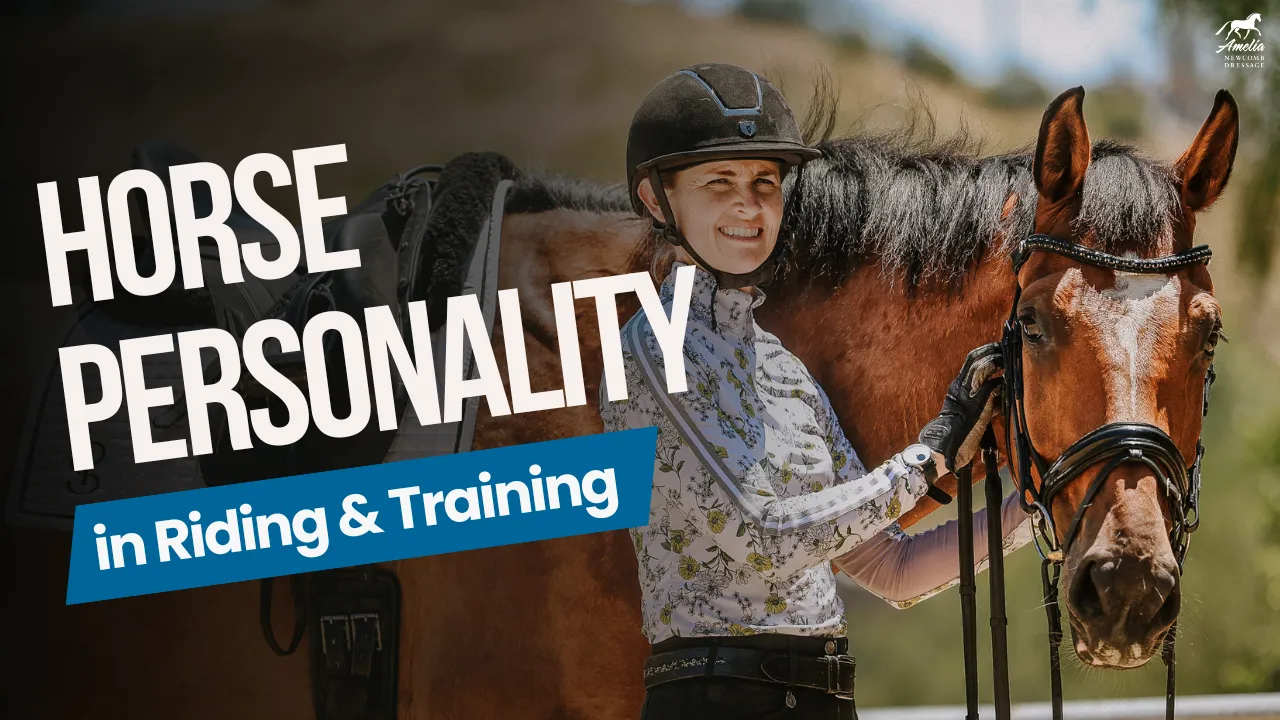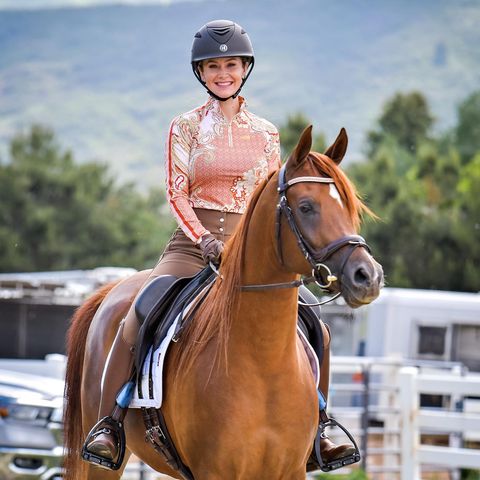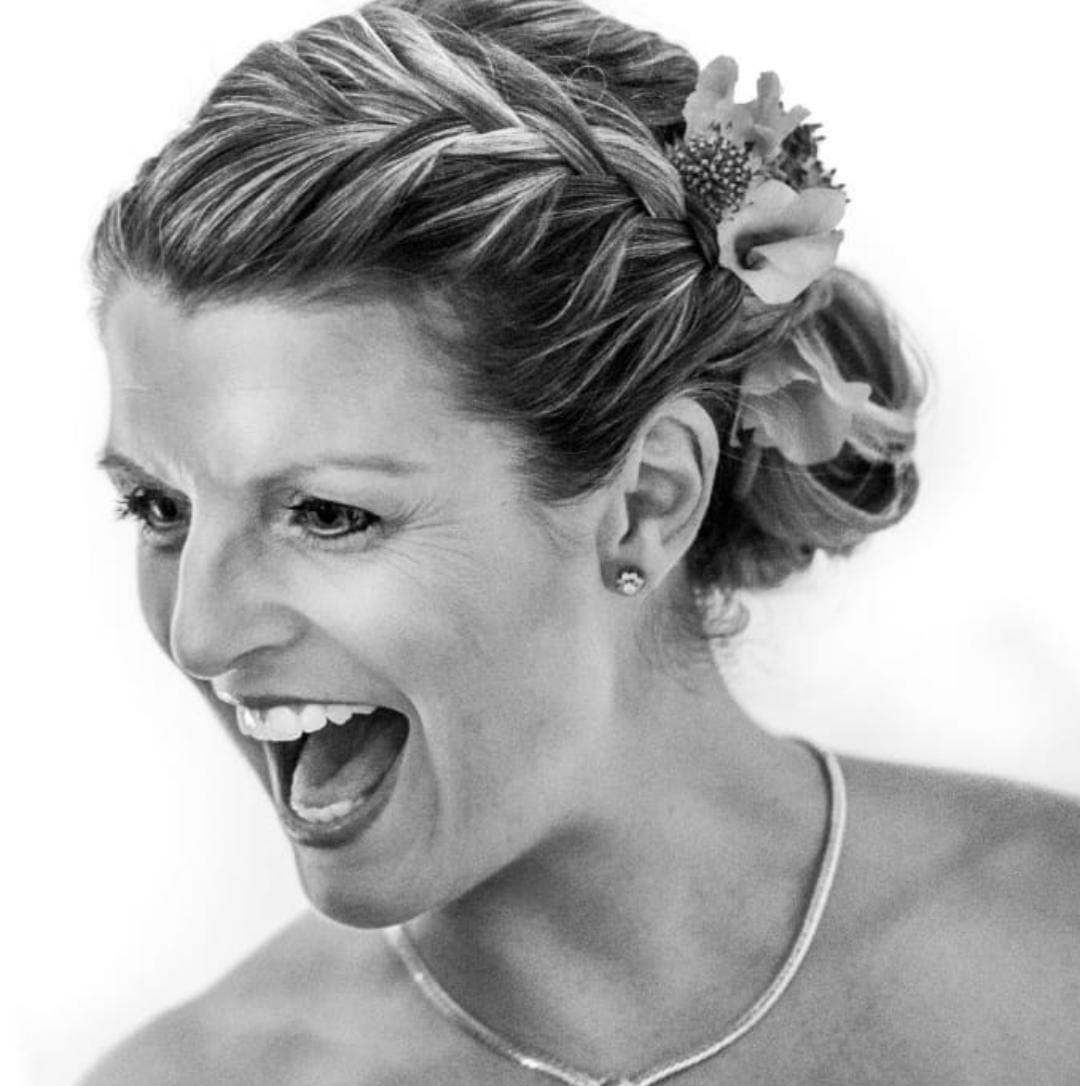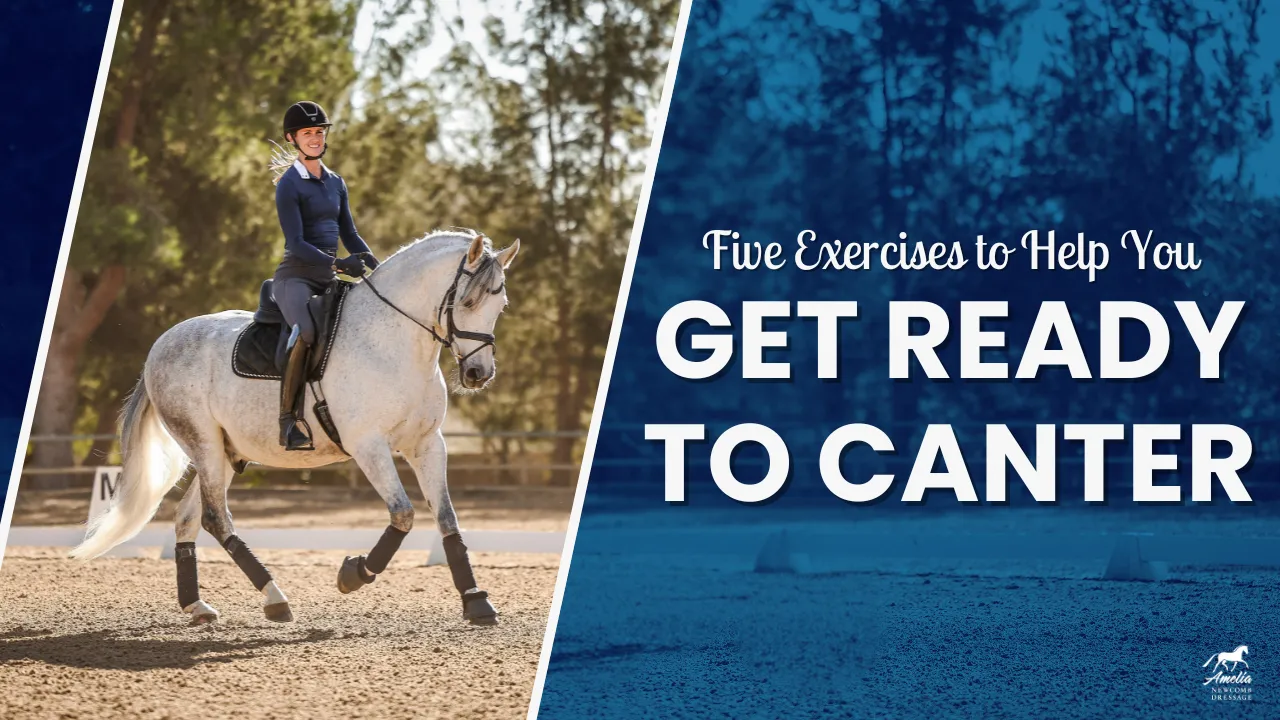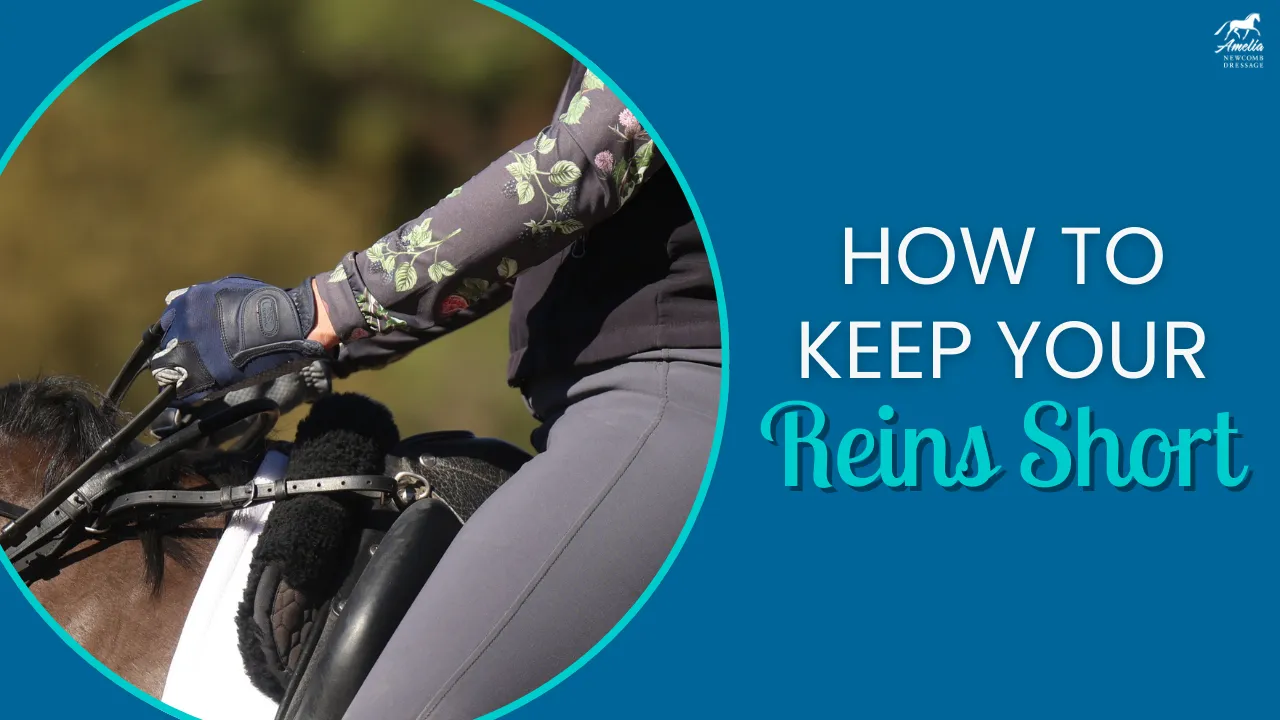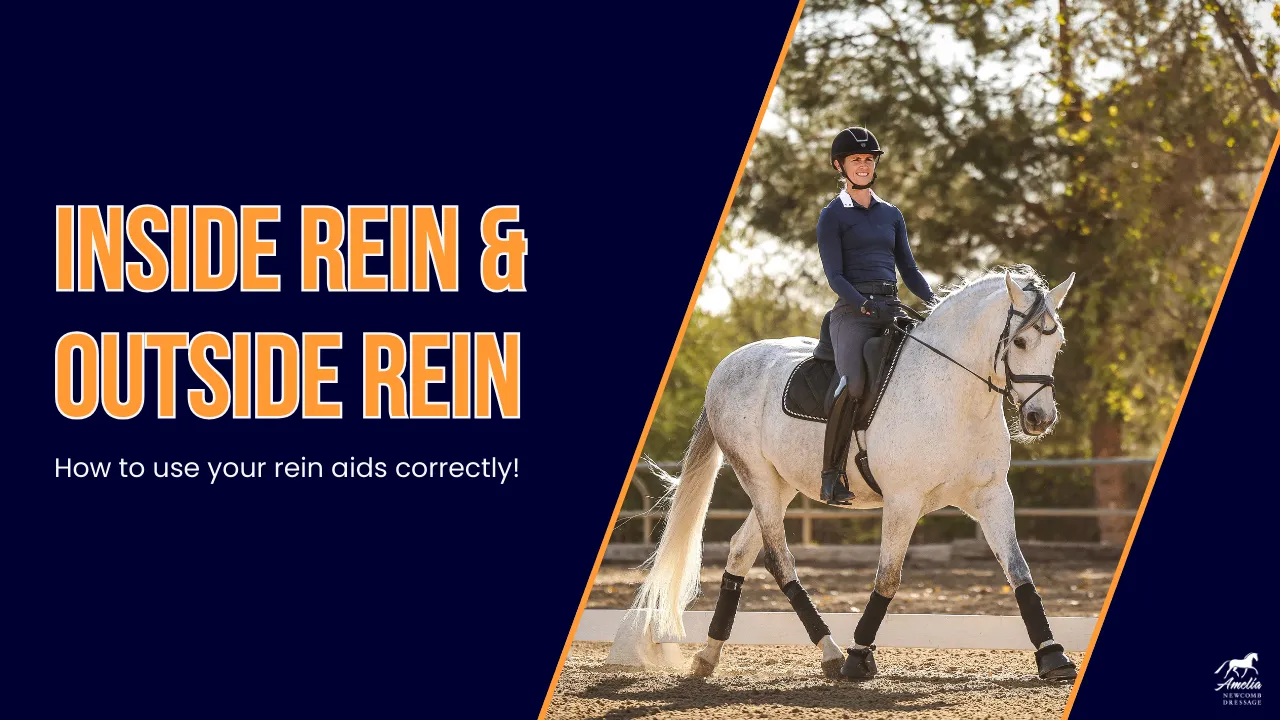Struggling with unbalanced, rushed, or crooked canter transitions? You’re not alone—and this exercise might be the solution you need. In this video, my husband, Germán, and I demonstrate how using a leg-yield into the canter can help establish better connection, straightness, and quality in your upward transitions.
If your horse tends to hollow, pick up the wrong lead, or gets tense when you ask for canter, adding a leg-yield beforehand can make all the difference. It’s especially helpful for young or green horses, like Poppy, the lovely 6-year-old mare we’re working with here.
The leg-yield is the perfect set up for the canter transition because it establishes inside leg to outside rein connection. This allows you to set up your canter depart from a place of balance and activity.
For horses that feel sucked back or hollow, or who are still learning how to stay round in transitions, this exercise is a great way to prepare the body before asking for canter.
Here’s how to ride it:
- Start in a forward, rhythmic trot. Get the contact and tempo you want before asking for canter.
- Turn up the centerline or quarterline. Ride a leg yield to the rail. It’s okay if the shoulders lead a bit in the beginning, especially with young horses.
- Repeat. Don’t rush. If the leg yield feels behind the leg, crooked, or hollow stay in trot and repeat it until it improves.
- Pick up canter out of a circle. Once you reach the rail, ride onto a circle and ask for canter as your horse bends around your inside leg.
- Adjust as needed. Every horse is a little different. Some are hot and anxious, others are laid back, so adjust the exercise based on your horse’s needs.
Tips for Success
Focus on rhythm and balance in your trot work. Make sure your horse is responsive and in front of the leg. Repeat the leg yield a few times if needed, and if something goes wrong, just go back to trot and rebuild.
The leg-yield organizes the horse’s body and helps you create engagement from the inside leg to the outside rein. When done correctly, it sets the horse up to pick up the correct lead from behind, with more softness, balance, and clarity.
Even if your horse struggles with spooky moments or unevenness in the contact, this exercise gives you a repeatable structure to work through it calmly and systematically. Let me know if you are going to give this exercise a try in your next ride!
Happy Riding,
Amelia
P.S. Need more help with your canter transition? Check out my Free PDF: Five Exercises to Do Before You Canter—perfect if your horse isn’t quite ready to canter yet, or if you want to go back to the basics and improve your canter transition.
